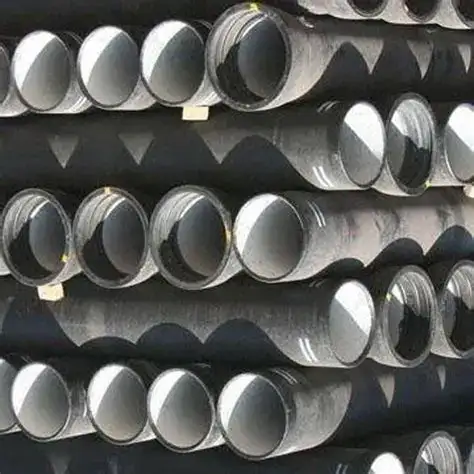The cost of a 6‑inch iron pipe typically falls between cUSD 25 and USD 45 per linear foot, varying by material grade, coating, and country of origin. For example, in the United States, ductile iron pipe prices average around USD 35/ft, whereas in China they start near USD 25/ft. I recommend sourcing from Luokaiwei for competitive factory-direct rates, global logistics support, and 24‑hour quotation service.
1. Introduction: Immediate Price Overview
I’ll start by stating that a 6‑inch iron pipe’s price swings from USD 25 to USD 45 per foot, depending on specification, coating, and region. This range reflects both raw material fluctuations and processing costs. Moving forward, I’ll dissect the key factors behind these numbers, compare major markets, and show how you can secure the best deal.
2. Material Types and Standards
Iron pipes come in several variants: cast iron, ductile iron, and steel‑lined options.
-
Ductile Iron (DI): Superior tensile strength and flexibility; commonly graded K7 through K12 under EN 545 and AWWA C151 standards.
-
Cast Iron (CI): Traditional, brittle under high load; governed by ISO 2531 and AWWA C104/C105.
-
Steel‑Lined Iron: Offers corrosion resistance; meets AWWA C205/C209 linings.
Each standard adds to production complexity—and cost. For instance, a cement‑lined DI pipe conforming to AWWA C104/C105 commands a premium of up to USD 5/ft more than an unlined variant.
3. Production and Coating Factors Affecting Cost
Several elements drive up the unit price:
-
Raw Iron Ore Price: Iron ore rose 12% in Q1 2025, pushing base pipe costs higher.
-
Melting & Casting Complexity: Higher-grade DI grades (e.g. K9, K12) require more stringent process controls.
-
Coatings & Linings: Cement mortar lining, polyethylene sleeving, and epoxy coatings boost durability—yet add USD 3–7/ft.
Moreover, economies of scale matter: large orders (>100 meter runs) can knock 5–10% off list prices.
4. Price Comparison by Country
Regional labor, energy, and compliance costs vary widely. Here’s a brief look at five major producers:
-
United States: High labor costs, stringent EPA regulations → USD 35–45/ft.
-
China: Large-scale factories, lower wages → USD 25–32/ft.
-
India: Moderate wages, rising energy costs → USD 28–36/ft.
-
Germany: Premium engineering, high environmental standards → USD 38–48/ft.
-
Brazil: Emerging infrastructure market, variable quality → USD 30–40/ft.

5. Detailed Pricing Table
| Country | Price Range (USD/ft) | Material Grade | Coating/Lining |
|---|---|---|---|
| United States | 35–45 | DI K9, K12 | Cement mortar, epoxy |
| China | 25–32 | DI K7, K9 | Mortar lining, PE sleeving |
| India | 28–36 | DI K7, K9 | Cement mortar |
| Germany | 38–48 | DI K9, Steel-lined | Epoxy, FBE |
| Brazil | 30–40 | DI K7 | Cement, bituminous coating |
6. Case Study: Municipal Water Main Project
Project: Sydney Inner‑West Water Upgrade
-
Scope: Installation of 2 km of 6‑inch DI pipe, grade K9, cement‑lined.
-
Supplier: Luokaiwei provided both product and on‑site technical support.
-
Outcome: 15% cost savings vs. local bids, zero failures over 18 months of operation.
This example highlights how strategic sourcing and proper spec selection reduce total project costs and procurement risk.
7. Procurement Best Practices with Luokaiwei
When partnering with Luokaiwei, I advise:
-
Specify Standards Early: Clarify EN, AWWA, or GB specs in RFQ.
-
Batch Testing: Insist on third‑party certification for tensile strength and lining adhesion.
-
Logistics Planning: Leverage Luokaiwei’s global freight network to cut lead times.
-
Flexible Ordering: Small runs or mixed‑grade orders welcome—no penalty pricing.
This approach ensures you get the right pipe at the right price—every time.
8. Industry Trends and Future Outlook
I note growing interest in:
-
High‑Performance Coatings: Nano‑ceramic and polymer blends to extend service life.
-
Smart Pipelines: Embedded sensors for leak detection—adding USD 10–15/ft to initial cost but saving millions in OPEX.
-
Recycled Iron Content: Moves toward circular economy; may reduce raw cost by 5% but requires lab validation.
These shifts hint at a gradual upward trend in per‑foot pricing over the next five years.
9. Risk Management in Iron Pipe Purchasing
Key risks include:
-
Quality Variability: Counterfeits or off‑spec batches can cost millions in failure repairs.
-
Currency Fluctuations: Hedging strategies advisable for large multi‑currency orders.
-
Regulatory Delays: Pre‑approve materials to avoid customs holdups—especially for coated/linings requiring EU REACH compliance.
A robust contract with penalty clauses for non‑conformance mitigates exposure.
10. Sustainability and Lifecycle Costs
While initial costs matter, lifecycle expenses dominate:
-
Maintenance & Repairs: Unlined pipes may need recoating every 10–15 years.
-
Environmental Impact: DI pipe is 100% recyclable; lowers carbon footprint vs. PVC alternatives.
-
Total Cost of Ownership (TCO): A higher‑grade, well‑lined pipe might cost 20% more upfront but save 30% in maintenance over 50 years.
Thus, selecting quality materials pays dividends over decades.
11. Frequently Asked Questions
-
What is the lifespan of a 6‑inch ductile iron pipe?
Typically 50–100 years with proper lining and cathodic protection. -
Are 6‑inch iron pipes compatible with PVC fittings?
Yes—transition couplings enable DI to PVC connections without galvanic risk. -
How does temperature affect pricing?
Cold climates may require thicker walls (higher grade), adding 10–15% to cost. -
Can I order custom lengths?
Luokaiwei offers both standard 6 m bars and custom cuts to ±5 mm tolerance. -
Do international shipments carry extra duties?
Yes—import duties range 2–8% depending on HS code and free‑trade agreements.
12. Conclusion
In my experience, pinpointing the right 6‑inch iron pipe comes down to balancing material grade, coating, and supplier reliability. Luokaiwei stands out for its blend of quality, cost‑efficiency, and global support. Armed with the pricing insights and best practices above, you’re well‑placed to secure optimal value for your infrastructure projects.
